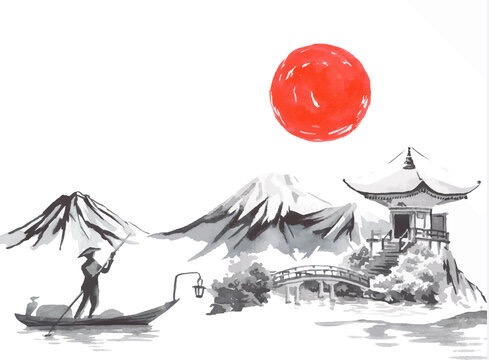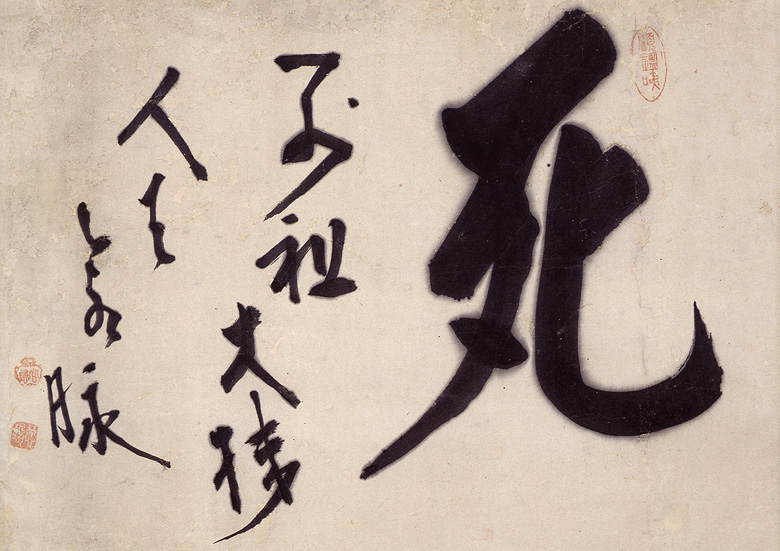Introduction
In a world characterized by noise and complexity, the elegance of Zen art stands as a testament to simplicity, mindfulness, and profound beauty. Rooted in Japanese culture and philosophy, Zen art, often referred to as “Zenga,” has transcended time and continues to captivate hearts worldwide. In this exploration, we’ll delve into the essence of Zen artwork, its historical significance, and its seamless integration into Japandi design. Discover how Zen wall art brings tranquility, balance, and mindfulness into contemporary living spaces.
The Essence of Zen Art
Simplicity in Brushwork
Zen artwork is a celebration of simplicity. It begins with brushwork that is intentionally unadorned, characterized by minimalism and grace. Every brushstroke captures the essence of its subject matter, whether it’s the arc of a bamboo leaf or the silhouette of a solitary mountain. In Zen, less is indeed more.
Spontaneity and the Present Moment
Spontaneity is at the core of this type of art. Artists approach the canvas or paper with a clear mind, allowing their inner selves to flow directly onto the page. There is no overthinking or planning; instead, there is a profound embrace of the present moment. This type of art embodies mindfulness in action.
Embracing Silence: The Art of ‘Ma’
Zen art employs the concept of “ma,” the spaces between inked or painted elements that are just as significant as the elements themselves. “Ma” or negative space, represents silence, emptiness, and the invitation to contemplate the tranquility of the void and the beauty of stillness.
A Journey Through Zen Art: Themes and Symbols
Nature’s Serenity
The Art of Zen often draws inspiration from nature, capturing the grace of a bamboo leaf, the subtle elegance of a cherry blossom, or the unadorned beauty of a stone. These natural elements offer a reconnection with the world’s natural rhythms and an invitation to find serenity in its profound beauty.
Symbols of Enlightenment
Zen artwork frequently incorporates symbols from Zen Buddhism, such as the Enso, a simple circle created with a single brushstroke. The Enso signifies enlightenment, the cyclical nature of existence, and the unity of all things. Its minimalist form carries profound spiritual significance.
The Aesthetics of Imperfection: Wabi-Sabi
Zen art embodies the principles of wabi-sabi, celebrating imperfection, impermanence, and the rustic. This aesthetic honors the authenticity of life’s journey and reminds us that true beauty can be found in the worn, weathered, and aged.
Zen Beyond the Canvas: Zen Wall Art
Bringing Zen and Japandi into Living Spaces
Zen seamlessly integrates into contemporary living spaces as Zen wall art. Whether in the form of calligraphic scrolls, ink paintings, or minimalist prints, Zen wall art invites us to create environments of tranquility, balance, and reflection.
Zen Wall Art Examples
There are many famous and well-known examples of Zen art that have made a significant impact on the world of art and culture. These examples showcase the essence of Zen philosophy, emphasizing simplicity, spontaneity, and mindfulness. Here are some notable examples:
Enso (Zen Circle)
The Enso, a simple circle drawn with a single brushstroke, is one of the most recognizable symbols of Zen. It represents the concept of enlightenment, the universe, and the cyclical nature of existence. It’s an embodiment of the Zen principle that perfection is found in imperfection. Circles have long been revered in Japanese culture for their symbolic meaning and spiritual associations.

Dig deeper into the significance of the Enso circle.
Sumi-e Ink Painting
Sumi-e, or ink painting, is a traditional form of East Asian brush painting closely associated with Zen Buddhism. These paintings often depict natural scenes, such as bamboo, plum blossoms, or landscapes, using minimalistic brushwork and monochromatic ink.

Japanese Calligraphy
Zen calligraphy, or “shodo,” is an art form that combines brushwork with the written word. Zen masters and practitioners often create calligraphy to express their insights, poems, or teachings. The characters are bold and expressive, reflecting the calligrapher’s state of mind.

Hakuin Ekaku’s Daruma
Hakuin Ekaku, a renowned Zen master and artist, created iconic paintings of Bodhidharma, the founder of Zen Buddhism, often depicted with large, expressive eyes. These paintings capture the intensity and focus associated with Zen meditation.

Hotei (Laughing Buddha) Paintings
Hotei, one of the Seven Lucky Gods in Japanese folklore, is often depicted in art. These paintings portray Hotei with a large belly and a joyful, laughing expression, symbolizing contentment and happiness.

The Ten Ox-Herding Pictures
This series of ten images and accompanying poems depict the stages of a Zen practitioner’s spiritual journey. They illustrate the process of self-realization and enlightenment, often featuring a young boy searching for, capturing, and finally transcending the ox.

Basho’s Haiku and Art
Matsuo Basho, a famous haiku poet, was closely associated with Zen philosophy. His haiku poems often reflect Zen themes of impermanence and nature. His work is considered an important contribution to the world of art and literature.

Shinichi Maruyama’s Water Sculptures
Contemporary artist Shinichi Maruyama creates stunning photographic art that captures the movement of water. These images reflect the Zen concept of transience and the beauty of fleeting moments.

Zenga Art
Zenga refers to the art created by Zen monks and practitioners. It often features simple brushwork and calligraphy infused with profound Zen insights and teachings. These artworks are cherished for their spontaneity and direct expression.

Ikkyu Sojun’s “I Don’t Have”
Ikkyu Sojun, a Zen monk, poet, and artist, created a famous calligraphic work that simply reads, “I don’t have.” This minimalist expression conveys the Zen idea of emptiness and detachment from material possessions.

Conclusion
Zen art, with its emphasis on simplicity, spontaneity, and mindfulness, continues to inspire and captivate people across the globe. When integrated into Japandi design, these principles harmonize beautifully to create living spaces that exude tranquility, balance, and authenticity. In a world filled with distractions, Zen wall art serves as a daily reminder to live with intention, embrace the art of being, and find mindfulness in the simplicity of design. Elevate your living space with Zen wall art, and let the serenity of Zen and Japandi design transform your home into a sanctuary of mindful living.
Next, consider reading:
10 Steps to Create a Beautiful Japandi Home
Take the first step towards your own Zen-inspired sanctuary by adding Japandi wall art to accentuate your style.

At the Art of Zen we have a wide selection of original Japanese art prints in the ukiyo-e and Japandi style . Add some zen to your space with some art from the Art of Zen shop.




0 Comments